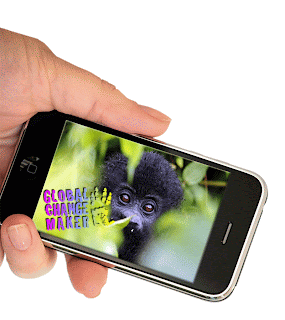30 October 2013
Dear Wildlife Advocate,
Africa’s largest mammals are seriously threatened. Ivory is now worth 20 percent more than gold, hence militant insurgents have turned to massacring elephants to finance their wars. The trade in tusks and rhino horn, and the buildup of armed groups in and around great ape habitats have all contributed to a poaching bonanza. Elephant, rhino, gorilla, and chimpanzee are now more threatened than at any other time in history.
African wildlife authorities are cash-strapped, unable to afford the numbers of rangers needed to adequately patrol protected areas. Consequently conservationists have turned to innovative technology to find new cost-effective ways of tackling the threats to wildlife.
One such innovation is the GorillaCam project proposed for the Bwindi Impenetrable Forest in Uganda. It uses small weatherproof cameras and green-energy fuel cells to keep an eye on one of the world’s only populations of mountain gorillas.
Working over the next four years in partnership with the Uganda Wildlife Authority, WildLIGHT and Global Changemaker hope to demonstrate that this innovation can be a self-financing means of protecting wildlife in remote protected areas across the continent. And in addition to boosting Africa’s beleaguered conservation efforts, GorillaCam will demonstrate the capacity for green energy to overcome a host of challenges in the developing world. We believe this presents a potential paradigm shift in global change.
GorillaCam has generated a good deal of interest. By all accounts it is a great idea, but we cannot proceed without pump-priming funding. At this time we are hoping to raise $40,000 - ten percent of the budget - so we may conduct due diligence, a site visit, and make all the necessary preparations before setting it up. We expect GorillaCam will have raised the rest of its entire budget via crowd-funding and be fully functioning in the jungle by the end of the first quarter of 2014, and that the project will start to become self-financing in 2016.
Your support is needed to stop the growing threats to Africa’s large mammals. Please consider making a donation to WildLIGHT for all or part of the $40,000 (£25,000). By stopping the poachers, you will not only be preserving elephant, rhino, chimp and gorilla populations for future generations, but you’ll also make Africa a much safer place.
Thank you for your generous consideration. Please don’t hesitate to email me for further information at wildlightconsultancies@gmail.com. I look forward to hearing from you soon.
Yours sincerely,
Greg Cummings
Director WildLIGHT
PLEASE DONATE
WildLIGHT Ltd (by Guarantee) - A Registered Charity in Uganda - No. 113928
For a pdf of this letter please click here
PLEASE DONATE
WildLIGHT Ltd (by Guarantee) - A Registered Charity in Uganda - No. 113928
For a pdf of this letter please click here








